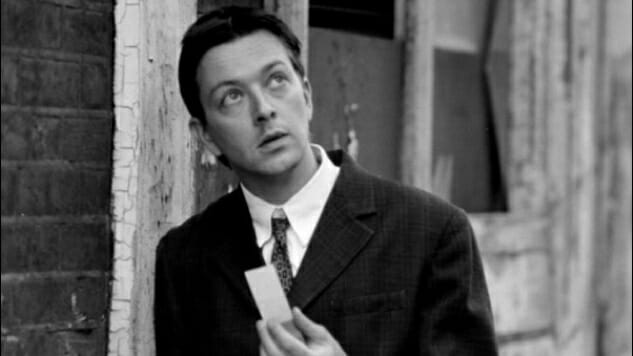Following and Christopher Nolan’s Sleight-of-Hand Filmmaking
The auteur’s black-and-white “pledge” introduced his style of theatricality and deception.

Christopher Nolan’s ascension into the current pantheon of Hollywood directors felt somehow inevitable. There’s a cool confidence to everything he’s written and directed, and it’s there on the screen, somehow underscored by the paranoia and obsession of his broken male heroes. They may be struggling against their insecurities, their guilt, or the women who are always betraying them, but at least they hire good tailors. Twenty years after the U.S. release of Nolan’s first feature, Following, the indie film is a fascinatingly complete statement on the entire stark, suspenseful, propulsive aesthetic the director still delivers. And it bears all the hallmarks of the time-jumping, self-assured, sleight-of-hand storytelling he brings to every feature.

A nervous, obsessed writer sits in a police interrogation room, relating the story of how he began an odd ritual: Following people around for the hell of it. Credited only as The Young Man (Jeremy Theobald), our protagonist claims he wanted to drink in details for his writing. It seems like he really just wants to know these things for himself.
One day, he’s made by one of his marks, the cat burglar Cobb (Alex Haw). Cobb decides he’ll bring The Young Man along on his blithe home invasions, teaching him the tricks of the trade: Don’t dress like a burglar, go with latex gloves for a good grip that avoids leaving prints, only steal things that are easy to fence and hard to trace, and always case the joint. Cobb’s propensity for sowing chaos in his victims’ lives—a misplaced earring here, a pair of underwear from a totally unrelated flat there—is far more sinister than the rest of his petty crime.
At the same time, The Young Man is becoming involved with another of his longtime marks, a woman credited only as The Blonde (Lucy Russell). In the course of Nolan’s out-of-order, suspense-building plot, we discover The Young Man started following her after Cobb brought him along to burgle her apartment. She’s a damsel in distress, at the mercy of a gangster with compromising photos of her locked in a safe. After his falling out with Cobb, The Young Man decides he’ll help her, transforming himself into the same kind of slickly dressed master thief to pull off a violent heist.
Like all Nolan stories, though, there’s a twist. The Young Man is himself the mark, followed and groomed by Cobb and The Blonde to be convinced to raid the gangster’s vault. He confronts The Blonde about it and goes to the police, but it’s too late. The Young Man finds out at the last that he’s been framed, and Cobb has killed the only woman who could corroborate his story before slipping anonymously into the throng of pedestrians.

The hallmarks of Nolan’s directorial style—narration over montage action that creates a sense of being unmoored, the framing device that brings viewers back to a baseline before the start of each act, the changes in characters’ appearances to indicate both how they’ve changed and easily mark to viewers where we are in the story even as time jumps all over the place—are all on display in a movie without the big-name actors, expensive cameras or mind-bending set pieces. In so many of the details, large and small, you’ll see echoes of later films where Nolan more fully develops similar ideas.
-

-

-

-

-

-

-

-

-

-

-

-

-

-

-

-

-

-

-

-

-

-

-

-

-

-

-

-

-

-

-

-

-

-

-

-

-

-

-

-









































